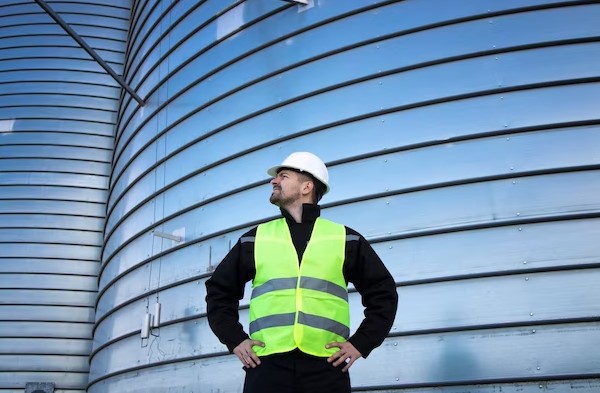Corrosion poses a significant threat to metal structures across various industries, leading to substantial financial losses and safety hazards. Industrial metal structures, such as bridges, buildings, oil rigs, and ships, are prone to corrosion due to their exposure to harsh environments and changing weather conditions.
Thankfully, advancements in materials science and engineering have resulted in the creation of innovative corrosion prevention methods that can extend the lifespan and maintain the integrity of these crucial structures. In this article, we’ll discuss some of the most effective corrosion prevention strategies used in commercial metal structures.
Grasping Corrosion
Corrosion is a natural electrochemical phenomenon in which metals revert to a more stable oxide state when they come into contact with oxygen and moisture. This process can result in rust formation and other unwanted compounds on the metal surface, causing material deterioration and structural weakening. In commercial settings, this phenomenon can lead to serious consequences, endangering infrastructure safety and raising maintenance costs.
Cathodic Protection
Cathodic protection is a corrosion prevention technique that utilizes electrochemical principles to protect metal structures. In this method, a sacrificial anode, typically made of a more reactive metal, is connected to the structure. The anode corrodes sacrificially instead of the metal structure, diverting the flow of electrons and preventing corrosion from occurring.
Galvanic cathodic protection is commonly used for submerged structures like offshore oil platforms and pipelines. On the other hand, impressed current cathodic protection is employed for larger structures such as bridges and storage tanks, where a power source is used to drive the cathodic protection process.
Protective Coatings
A widely recognized and effective technique for combating corrosion involves applying protective layers to metallic surfaces. These layers serve as a shield between the metal and its corrosive surroundings, preventing water and oxygen from infiltrating. Some prevalent protective coverings consist of epoxy coatings, polyurethane coatings, and powder coatings.

Epoxy coatings have gained popularity due to their outstanding adherence capabilities and chemical resistance, making them well-suited for sectors such as marine and oil & gas. Alternatively, polyurethane coatings offer notable UV defense features, rendering them perfect for external structures like bridges and towers. Powder coatings are utilized across various applications attributable to their resilience, cost-efficiency, and environmentally friendly nature.
Alloying
Alloying is a technique that involves adding specific elements to a metal to enhance its corrosion resistance. By altering the composition of the metal, engineers can tailor its properties to withstand harsh environmental conditions more effectively. Stainless steel is a classic example of an alloy that is highly resistant to corrosion due to its high chromium content, which forms a passive oxide layer on its surface, for this reason, people often opt to choose a stainless steel sheet over other options.
In the automotive industry, galvanized steel is a common example of alloying. By coating regular steel with a layer of zinc, the metal gains improved resistance against corrosion, making it suitable for vehicle components exposed to various weather conditions.
Organic Corrosion Inhibitors
Organic corrosion inhibitors are substances that can be added to coatings or directly applied to the metal surface to slow down or prevent corrosion. These inhibitors work by forming a protective film on the metal surface, blocking the access of corrosive agents. Organic inhibitors are commonly used in the water treatment industry, where they protect metal pipes and equipment from corrosion caused by the water’s aggressive chemical properties.
Proper Maintenance and Inspection
Regular maintenance and inspection play a crucial role in preventing corrosion in commercial metal structures. Early detection of corrosion spots allows for timely intervention and repairs before significant damage occurs. Implementing a proactive maintenance schedule, including cleaning, repainting, and addressing minor damages, can significantly extend the lifespan of metal structures and reduce repair costs.
Corrosion prevention techniques are vital to the longevity and safety of commercial metal structures. By adopting protective coatings, cathodic protection, alloying, organic corrosion inhibitors, and proper maintenance practices, industries can effectively combat the harmful effects of corrosion. As materials science and engineering continue to advance, we can expect even more innovative and sustainable methods to protect our vital metal infrastructure from corrosion, ensuring a more resilient and sustainable future for generations to come.




